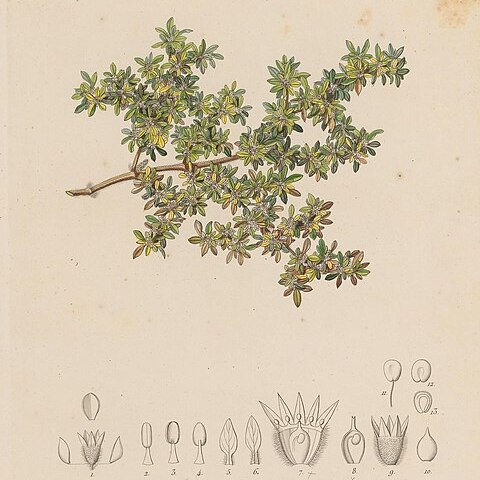Herbs, perennial. Stems prostrate [or ascending], much-branched, indumentum of simple hairs. Leaves opposite, petiolate; blade linear to lanceolate, spatulate, or ovate, margins entire; basal leaves withering. Inflorescences axillary, sessile, few-flowered glomerules; bracts and bracteoles membranous. Flowers bisexual; tepals 5, connate proximally ± 1/2 its length, 1-veined; stamens 5; filaments connate basally into tube, tube adnate to calyx distally; anthers 2-locular; pseudostaminodes absent; ovule 1; style 1, ca. 0.2 mm; stigmas 2-lobed, capitate. Utricles broadly ovoid, membranous, indehiscent. Seeds 1, red-brown, lenticular-orbicular.
Perianth segments elliptic or ovate, almost entirely delicate and hyaline or firmer with 3 green nerves, free or fused to about halfway; perianth and bracteoles falling with the fruit, bracts persistent.
Stamens 5, the filaments fused into a tube, the tube free (not in Africa), or adnate to the perianth tube; anthers unilocular.
Ovary with a single pendulous ovule; style usually short (longer in one West Indian species); stigma shortly bilobed.
Inflorescences sessile, axillary, densely spiciform, often densely fasciculate at the nodes.
Flowers hermaphrodite, solitary within the axil of each bract, bibracteolate.
Perennial herbs, rarely somewhat woody below, with entire, opposite leaves.
Utricle thin-walled, bursting irregularly.
Seed compressed, firm.

